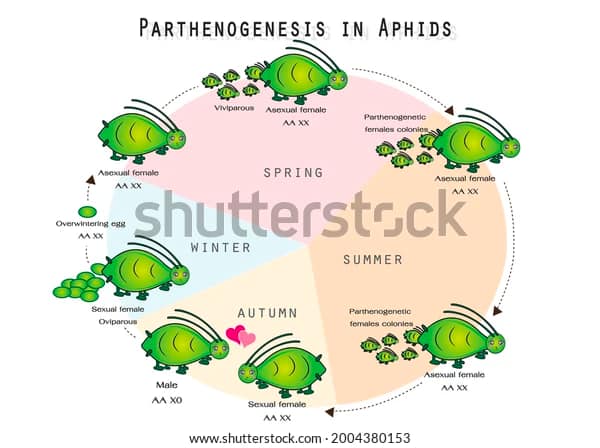How Many Modes of Reproduction are There in Animals
There are two modes for animals to reproduce, just like there are for plants. This includes:
Sexual reproduction
Asexual reproduction.
One creature can create children through a process called reproduction. All known life forms use it as one of their fundamental mechanisms. Reproduction is the primary cause of every living thing we observe.
Sexual reproduction
A single zygote is produced by fusing the gamete cells of two different organisms, one male and one female, in this method of reproduction. The mother receives the other half of this zygote's genetic material, while the father receives the other half. There are numerous sexual reproduction techniques used by both plants and animals;
However, the fundamentals are the same in all of them. The result of sexual reproduction is the development of a new individual who is genetically and physically distinct from their parents. When sperm and egg (ovum) combine to form a zygote, this process of fertilisation is how humans reproduce sexually. In order for sexual reproduction to occur, fertilisation must occur. Sexual reproduction cannot proceed to its fullest extent without fertilisation.
Animal Sexual Reproduction
The majority of animals reproduce sexually, but there are other methods as well. Even though there are many diverse ways for animals to reproduce sexually, most do. In order to create a diploid zygote, which shares DNA with both the parent
Example: Cells, a haploid sperm, and a haploid egg must come together during sexual reproduction in animals. The process of self-fertilisation allows some invertebrates to reproduce by fertilising their own eggs with sperm, such as tapeworms and some other parasites. Animals can reproduce sexually by either internal or external fertilization (some reptiles and birds), as demonstrated by humans and dogs.
Asexual Reproduction
It is a reproduction method in which a single organism participates. The offspring, who shares a genetic resemblance with the mother, almost always has the same number of chromosomes. They are called clones as a result. They are also identical replicas of their parent cell.
Different entities choose to reproduce asexually. Asexual processes include the following: spore production (for instance, in ferns), fragmentation (for instance, in Planaria), and vegetative propagation (for instance, in onions). Some examples of asexual processes include budding (for instance, in Hydra), binary fission (for instance, in Amoeba, bacteria), spore production (for example, in ferns), and fragmentation (for example, in Planaria).
Animal Asexual Reproduction: Asexual reproduction is used by several primitive species, many of which are single-celled.
Examples, Asexual reproduction occurs in a variety of animals, including parthenogenesis, fragmentation, regeneration, and gemmules (sponges) (ants, wasps).
Asexual reproduction is a type of reproduction that occurs without the involvement of gametes or fertilization. Instead, offspring are produced from a single parent organism, and the offspring are genetically identical or nearly identical to the parent.
Parthenogenesis is a form of asexual reproduction in which an egg develops into an embryo without being fertilized by a sperm. This process is common in some invertebrates, such as certain species of ants and wasps.

Fragmentation is another type of asexual reproduction in which an organism breaks into two or more parts, and each part can regenerate into a new individual. This process is common in some invertebrates, such as starfish and flatworms.
Regeneration is the ability of an organism to regrow lost body parts or even regenerate a whole body from a small piece of tissue. This process is common in some invertebrates, such as planarians and sea anemones. Gemmules are small clusters of cells produced by some sponges that can develop into new individuals. These gemmules are capable of surviving adverse conditions and can later develop into new sponges when environmental conditions are more favorable.
Conclusion
Overall, asexual reproduction can be advantageous for organisms that live in stable or predictable environments, as it allows for rapid reproduction and the ability to colonize new habitats quickly. However, it can also limit genetic diversity and the ability to adapt to changing environmental conditions.
Life has an unrivalled beauty. The world is a place where homicide, war, poverty, natural disasters, and hunts occur. The number of species on our planet is still estimated to be around 8 million. Another enters as one dies. It has an endless cycle of life. The answer is already within us; it can be found in the way that living things reproduce. Animal and plant species are kept alive thanks to it. Like breathing and movement, it is an essential aspect of living.
Applications for Admissions are open.
As per latest syllabus. Physics formulas, equations, & laws of class 11 & 12th chapters
JEE Main Important Chemistry formulas
Get nowAs per latest syllabus. Chemistry formulas, equations, & laws of class 11 & 12th chapters
JEE Main high scoring chapters and topics
Get nowAs per latest 2024 syllabus. Study 40% syllabus and score upto 100% marks in JEE
JEE Main Important Mathematics Formulas
Get nowAs per latest syllabus. Maths formulas, equations, & theorems of class 11 & 12th chapters